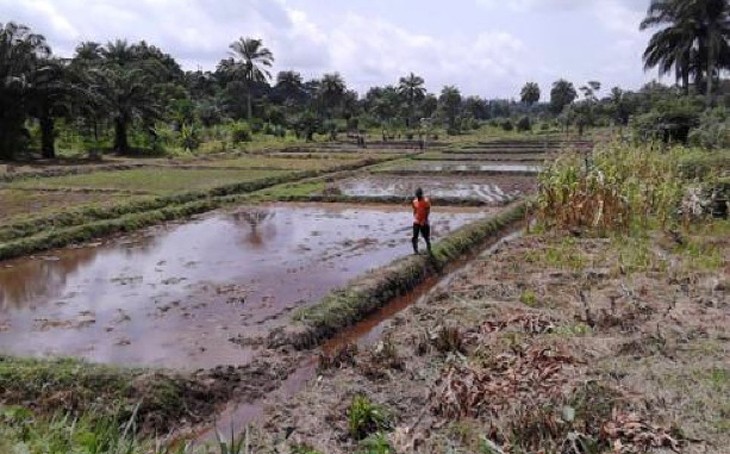
During a recent trip to Liberia, a team led by USAID’s Global Water Coordinator Chris Holmes visited a number of innovative programs there that strongly influenced the formation of the Agency’s Water and Development Strategy, and have the potential to be replicated in other countries. One of these programs is USAID’s Food and Enterprise Development Program, or FED, which is part of the U.S. Government’s Feed the Future initiative.
The Strategy strives to strengthen health and food security through water programs. FED is a flagship project for the Agency that seeks to increase agricultural activity and profitability through value chain development, focusing on such crops as rice and cassava. The team learned more about how the management of water plays a key role in meeting the program’s objectives.
Programs like this are particularly important in Liberia where agriculture accounts for more than 50 percent of the gross development product and 70 percent of the workforce is employed in agriculture, but productivity is low and food insecurity is widespread. Estimates show that at least 40 percent of Liberia's children suffer from stunting caused by a lack of nutrition and severe early childhood bouts of diarrhea, often brought on by contaminated water.
The FED project is working closely with farmers on the construction of paddies with bunds (embankments) and canals for water control in low lands. The group observed a pilot project growing rice in swamp land that had not be productive since before the civil war. USAID is working with farmers on crop diversification and varied ways to improve water management, including using mechanized pumps in conjunction with drip irrigation for medium to large size farm groups, while supporting the use of treadle pumps for smallholder farmers. To cope with excessive rainfall that depletes soil nutrients, creates erosion, and damages crops, FED is supporting rain shelters for vegetables and the planting of vetiver grass for erosion control.







Comment
Make a general inquiry or suggest an improvement.